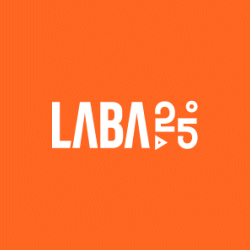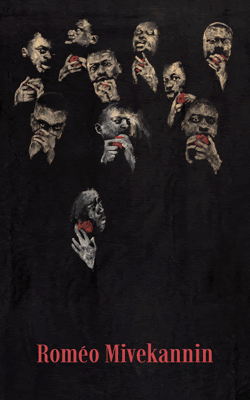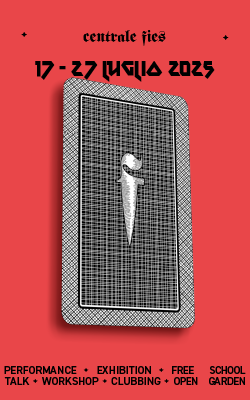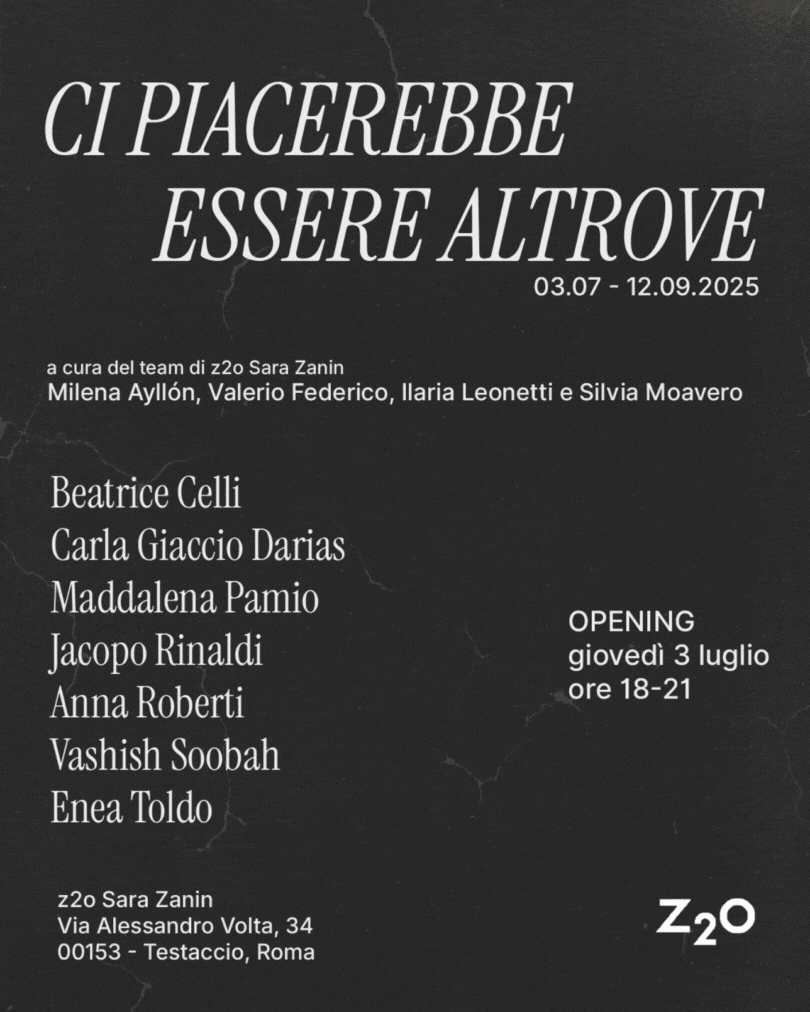[nemus_slider id=”43828″]
Next weekend, on May 30 and 31, will open GRANPALAZZO, the two day exhibition-event organized by Paola Capata, Ilaria Gianni, Federica Schiavo and Delfo Durante. Hosted in the beautiful setting of Palazzo Rospigliosi in Zagarolo, GRANPALAZZO brings together a small group of artists supported by active and research-based galleries both from the Italian and the international art scene. ATPdiary asked to some of these artists to tell us about the artworks they’ll show in GRANPALAZZO and their opinion about this original and quite unique event.
“The skin is a language”, tells us Mohamed Namou about “Rite de passage”, the piece he’ll show in GRANPALAZZO. “The skin explains your feelings: the anger, the joy, or when you are sick. My interest is about the language behind the shape, what ever it is. All is communication, a mark of presence.” Supported by the Paris and Bogotà based gallery mor charpentier, the Algerian artist thinks that “GRANPALAZZO is an interesting format because it rethinks the art fair. It represents a possibility to reassess artistical proposals in the future. ”
“To be honest, I’m cool”, tells us Maxim Liulca about the event. “There is some galleries/artists I have never heard about them (I’m sure they think the same about me) and also some galleries/artists which I know. But I like this idea, at the end of the may, in a some “palazzo” near Rome, to show my works (with other artists) to other people, and all this is for the first time. It’s beautiful”. Supported by Pistoia based gallery SpazioA, at GRANPALAZZO the artitss will show some recent paintings. “I’m not very good in speaking, even if I’m writing right now. The paintings seems to be abstract and I would like to invite you to take a look at them”.
More precise and accurate about his presentation, Eric Brainbridge introduces his three artworks with this articulate description: “The first work ‘The Philosopher’s Garden’ 2011 is part of a series of steel sculptures made in relation to the early work of Anthony Caro, David Smith and others. I wanted to test the classic ‘abstract language’ we all recognize and see what other content could be included. (Here the curved form is in contrast to the more severe linear hard edge steel elements. In other works in the series I have included a kitchen cloth and a bed cover). The second work (Untitled) 2014, is a simple vertical form covered in real animal fur. (actually rabbit with a printed ‘exotic’ pattern). This work was made in Bangkok and was intended to play on my use of synthetic fur in my early sculptures. Also the use of real fur as a covering, increased the absurdity of an object made in the tropics. (hope Rome is warm in late May!). The final work ‘Pink’ 2014, is a piece that references Duchamp, Beuys and maybe Arte Povera in general. I have always felt close to A/P. Here objects with differing characteristics find a way to coexist”. Presented by Workplace gallery, the artist clarifies: “I felt it was important to show more than one work, so suggested these works to indicate something of my attitude to sculpture, as well as talking account of the historic setting”.
“Some examples of the objects I used: a silk tie, electrical wiring, wine bottles, wing mirrors, orange peel, sponges, chopsticks, leather tassels, sunglasses, Sellotape, fitness weights, shot glasses, incense sticks, shampoo bottles, breadsticks, drinks coasters, necklaces, bracelets, nuts, broken plates, belts… ”, tells us London-based artist Samara Scott. “The piece was fabricated back-to-front. It’s a large, low suspended slice of glass – a collage, a relief – it gloats slippily somewhere between painting, sculpture and photography. Squished against its underside/immersed in its translucent fabric are a series of collaged objects dripping in a moist velvety sleeze of eyeshadow. Local material, slothful debris… half in a tidal swirl, but also in an archeological composition this matter is arranged in swirly rhythms and imposter brushstrokes”. Supported by the nomad gallery Ermes, the artist deepens the description of her piece: “After the objects have cured in their rubbery sludge the back side is dusted with irridescent eyeshadow, creating these hyper-real wet undulations. It’s important to me that I avoid using classical art material – rather than using resin and pigments the metaphor/sorcery of using a product such as eyeshadow (used to decorate and stylize and seduce) is really important. Because my practice is all about touch. All these hard and soft things pushing up against each other…”.
Regarding her source of inspiration: “The work is named after a Kandisnky painting. It’s a liquid floating musical score of inner subjectivity expressed with a Schwitters objecthood of exclamation marks, filaments and mock-spiritual dreamlike scatterings. I also think about the way it relates to the planes of cubism. Because it’s a still life. In its construction it’s literally an inverted table arrangement. I like the way it might relate to these thematic – and often corporatised – art histories. The arrangement of matter on a city swank glass table lobby where these objects are almost cut through into a horizontal screen. You can only experience them as a single surface, in a single photographic scanner plane…”
Milan-based gallery Zero… will present a new group of sculptures and polaroids by Giorgio Andreotta Calò. The characteristics and peculiarities of the exhibitions space, and the nature of the project, had a strong influence on the dialogue with the artist that led to the selection of the pieces.
“I will present 3 paintings and a performance”, tells us Portuguese artist Hugo Canoilas. “The paintings use a poem entitled “Spirit of the air” that I have written between 2012 and 2013. Each stanza of the poem is depicted on top of an abstract painting made with ink on unprimed linen, which gives to the fluid – abstract painting a more decorative quality, batik like, reinforced by a repetition of the same color palette and gestures. The text on top of the abstract painting is meant to grab the prevailing will to understand the work from the viewer. Still, the poetic quality of it makes it vague or elastic, capable to receive the projections from the viewer. The painting underneath the text is in “passive communication” with the body of the observer that looks without looking, without preconceptions. This dichotomy of experience within one work is an attempt to keep the painting operating between the head and the stomach, the affirmative and reactive forces that are producing it. The time of reading the text usually is the time frame of attention towards the painting which cuts the contemporary fast quick look, reducing the speed of the observer”. About the performance: “I will perform under the alter ego Jeffrey. Jeffrey will come to the exhibition and talk about the fringe between culture, politics and spirituality. Jeffrey uses poetic –faux- prophetic words that should operate as a cloud above the heads of the visitors; trying to make them look again as if new, projecting life (and the multiplicity of events) into art and vice versa; making art a space of the middle, in between, something that lives from its interrelationship with all things.” Presented by Catania based gallery Collicaligreggi, the artist is very happy to be part of this event. He told us that “until now, in terms of organization and dialogue with people, it has been great. It seems well organized and with close approach to our work, giving some great energy that allow us to work in full enthusiasm. Thinking of it as an exhibition, it doesn’t come as original by the choice of the venue and time frame but by the fact that has binding factor between galleries and close approach to artists, galleries, collectors and hopefully visitors! It’s in this case that the event as a hypothesis to rethink the oppression of art fairs over the smaller or younger galleries. It is a refreshing idea. It brings me to the wish of a re-enactement of what was happening in the first fairs where artists, gallery owners and collectors would come together and talk, share, handle the work with their hands, etc. It’s in this matter that it seems a great project”.
“I think it’s a brave but nevertheless challenging decision of displaying contemporary art in an environment like the Palazzo Rospigliosi”, tells us Austrian artist Nick Oberthaler. “That will create a certain dynamics between the shown works and the different rooms, richly decorated with its subtle frescoes”. Supported by Amsterdam based Martin Von Zomeren gallery, the artist will present two paravents/folding-screens, made out of basic black colored MDF panels and small paintings on aluminium. When asked if the setting and the brevity of the event had any influence on the conception of the piece, he told us: “In a certain way yes, because the space and its conditions defined my decision of using these folding screens as a backdrop and display wall for the small paintings – although i have recently shown folding screens on different occasions as works on their own (for example at the show RIDEAUX/blinds at the IAC Villeurbanne, curated by Marie de Brugerolle)”.
“I was interested to bring works that will be related to the project I present in Croatian Pavilion in Venice. Rather focused nature of the event made me think about more studious, even more difficult and focused set of works”, tells us Damir Ocko, supported by Napoli based gallery Tiziana Di Caro. “The works are related to my project “Studies on Shivering”. I will present a set of works that explore different fields of “shivering as a political metaphor, intertwining both politics and poetics in the form of a photography or a collage. The questions of the human body and the exploration of the physical realities of the body, as a social or political subject, have been the core this project overall”.
He’s very positive about the event: “It seems quite focused and curated comparing to many other similar events. More like an exhibition then an art fair, hence my choice of works for this event feels more controlled. ”













